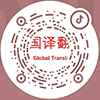Specific Solutions
How Much Does Spanish Translation Cost per 1,000 Words?
— A Professional Perspective from Elite Translation
As trade, education, law, and culture continue to connect China with Spanish-speaking countries in Europe and Latin America, Spanish translation services are in growing demand. From business contracts to academic documents, product manuals to travel brochures, clients often ask the same question:
“How much does it cost to translate 1,000 words into Spanish?”
The question is simple. But the real answer depends on much more than just a number. At Elite Translation, we believe clients should understand what factors shape translation pricing—and what quality truly means.
1. Spanish Translation: Not Just Word for Word
Spanish is the second most spoken native language in the world, with regional variations across Spain, Mexico, Argentina, Colombia, and more. A high-quality translation requires more than basic fluency—it demands:
Understanding regional terminology differences
Mastering formal and informal tones
Using accurate legal, technical, or marketing language
Adapting sentence structures between Chinese and Spanish
This means Spanish translation is not a mechanical task—it’s a professional service combining language, culture, and expertise.
2. Key Factors That Influence the Cost per 1,000 Words
▪ Language Direction: Chinese to Spanish vs. Spanish to Chinese
Chinese to Spanish: Often used for marketing materials, contracts, technical documents
Spanish to Chinese: Typically for inbound business, certifications, manuals, or public tenders
Each direction involves different challenges and resources.
▪ Level of Specialization
General content is more straightforward, but fields like law, medicine, architecture, finance, or engineering require subject-matter expertise, which increases the complexity and cost.
▪ Language Rarity (in Context)
While Spanish is globally widespread, qualified translators in China with both Spanish proficiency and domain expertise remain relatively limited, increasing market value for quality service.
▪ Source Text Quality and File Type
Clean, structured source documents (e.g., Word files) are faster to process.
By contrast, scanned PDFs, poorly written texts, or documents needing layout adjustments require additional effort.
▪ Certification or Special Format Requirements
Translations for visas, immigration, education, or official use may require:
Certified translators
Signed statements
Official company stamps
These services follow stricter workflows, which influence overall pricing.
3. Beyond the Numbers: What Are You Really Paying For?
At Elite Translation, we believe the question shouldn’t just be:
“How much is 1,000 words?”
But rather:
“What is the translation being used for—and does it serve its purpose?”
The cost of a legal agreement or technical manual translation, for example, is not just about length. It’s about accuracy, risk avoidance, and usability. A poorly translated document can lead to misunderstandings, rejections, or even legal consequences.


















